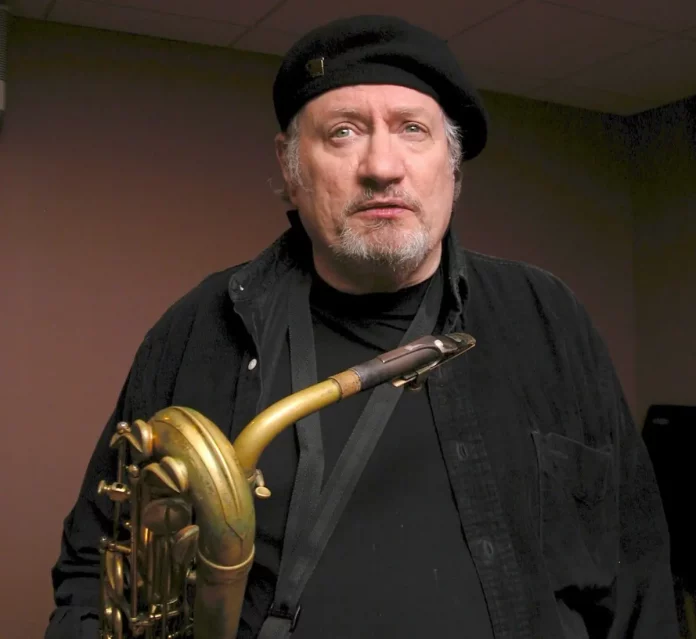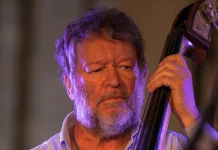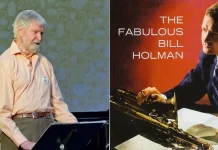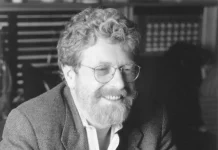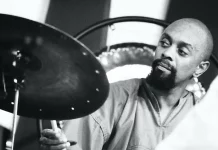The prodigiously talented Ronnie Cuber’s association with the baritone saxophone began quite by chance. He was born into a musical family in Brooklyn on Christmas Day 1941. Beginning on clarinet he switched to the tenor at Alexander Hamilton High School and then went on to study at the Brooklyn Conservatory of Music. His influences at that time included Sonny Rollins, Hank Mobley, John Coltrane, Dexter Gordon and Gene Ammons.
His switch to the baritone took place when he tried out for Marshall Brown’s Newport Youth Band in 1959. He auditioned at Brown’s Park Avenue apartment on tenor where he played Hank Mobley’s four choruses from his 1955 Prince Albert solo. This really impressed Brown, but he already had a surplus of tenors. There was a vacancy for a baritone so Marshall generously bought him one from Ponte’s Music Store near Times Square.
Equipped with his brand new Selmer, Cuber joined the band, which included Michael Abene and Eddie Gomez. He recorded his first solos with them on Brunch in June 1959 and Tiny’s Blues the following month. He later acknowledged Pepper Adams and Harry Carney as his main point of reference but it was not long before he found his own unique voice.
After leaving the band in 1960 he went on the road with Slide Hampton, Maynard Ferguson, Lionel Hampton and Woody Herman.
In 1964 he achieved a particularly high profile as a soloist when he joined George Benson’s trio which also featured Lonnie Smith on organ. Groups with that particular line-up often included a tenor but as Ronnie said a few years later, “It was different having a baritone. I was getting more solo space than I had playing in big bands and I sort of stood out. We got a hard-hitting rhythm and blues feel.” John Hammond recorded them for Columbia and Cuber was clearly in his element performing Benson’s down-home, blues-based repertoire.
In 1966 he achieved some recognition when he won the Downbeat new star award and in the 70s he began an association with Aretha Franklin and her musical director King Curtis.
He also had a long and close musical relationship with Eddie Palmieri, which inspired the love of Latin music that was to become such a hallmark of his performances in later years. In 1976 his Cuber Libre CD proved to be a stunning debut, heralding the arrival of a major new voice on the instrument. It was the first of 20 critically acclaimed albums he recorded as a leader through a long prolific career. The producer Don Schlitten hired Barry Harris, Sam Jones and Albert Heath for the date. Cuber would have preferred Philly Joe Jones on drums but there was not enough money in the budget for him. During a recent interview with Bret Primack, Ronnie said that Albert Heath turned up without sticks which needed a quick visit to a music store on New York’s 48th Street to buy a pair. He also did not have his own drums so he used an old studio kit that was lying around which annoyed Ronnie.
Two years later Cuber joined Lee Konitz’s cerebral nonet, regularly working with them at Stryker’s, the Half Note and the Village Vanguard. He is heard on Yes, Yes Nonet, Live At Laren and The Lee Konitz Nonet CDs. His extended feature on Tadd Dameron’s If You Could See Me Now on the latter is alone worth the price of the CD. After the leader he was one of the most heavily featured soloists on each album.
Ronnie had studied the flute with Danny Bank and with that, his bass clarinet, tenor and baritone he began working seven hours a day in the New York studios in the late 70s. He recorded with Eric Clapton, Steely Dan, Paul Simon, The Eagles, Chaka Khan, Carly Simon, Patti Austin, Frank Zappa, Billy Joel and Yoko Ono among others. There were also numerous jingles sessions. He said “I had to be flexible to earn.” He excelled whatever the environment but always as a “bebopper at heart”. Achieving a first-call status he became such an important part of the recording scene that he was voted the Most Valuable Player by the Academy of Recording Arts & Sciences (NARAS) from 1979 to 1986. From 1975 to 1985 he was a member of the Saturday Night Live Band.
In 1984 he performed on Frank Sinatra’s final studio recording L.A. Is My Lady; produced by Quincy Jones it took just one week to record. According to Will Friedwald’s Sinatra! The Song Is You, “Jones assembled an all-star aggregate of the hottest New-York players . . . the cream of the city’s studio giants.” They were all big band veterans and a small sample of the ensemble includes Randy and Michael Brecker, Joe Newman, Jon Faddis, Urbie Green, Bill Watrous, Jerome Richardson, Frank Wess, Frank Foster, Ray Brown and Steve Gadd along with Ronnie – great readers all. He also did a week with Sinatra and Dean Martin around this time at the Golden Nugget in Atlantic City.
In the 90s he began a series of recordings as a leader that allowed him to focus on bebop in various guises. The 1991 Cubism featured a wide-ranging repertoire including exotic Afro-Cuban rhythms on Arroz Con Pollo and Barra-Cuber, straight-ahead blowing on I Ronic (Cuber on a borrowed tenor), a James Brown-feel on Cheetah and the sensuous rhumba setting of Ponta Grossa. It is sometimes forgotten what a gifted writer he was – these are all Cuber originals.
His 1993 The Scene Is Clean is a Latin date with either Manolo Badrena or Milton Cardona added on percussion to a four-man rhythm section. It includes some more of his attractive compositions like Song For Pharoah, Mezambo and especially Arroz Con Pollo.
Two years later he recorded In A New York Minute with the admirable Kenny Drew Jnr. who has a brisk work-out on Dig which he concludes with a chorus in octaves. The title track is particularly noteworthy. Based on a minor, eight-bar descending sequence, it develops an irresistible feeling of exquisite tension that ends all too soon. The well-named Con Pasión has all the dramatic intensity of an operatic aria allowing Ronnie to demonstrate his amazing facility and powerful sound in the altissimo register. Both New York Minute and Con Pasión are Cuber originals.
Cuber began a long association with Charles Mingus’s music in the early 90s when he appeared on the Mingus Big Band 1993 CD. His arrangement of Nostalgia In Times Square a.k.a. Strollin’ Honies begins with his own hip, Jack Kerouac-style monologue describing how he first sat in with Mingus at Birdland as a youngster. Moanin’ opens with his baritone in the role of a gospel preacher at a revival meeting accompanied by enthusiastic encouragement from the band before he launches forth on that unforgettable theme. Performances like these are presumably what tenor man John Stubblefield had in mind when he said “[Ronnie’s] a pit-bull when he and that horn connect.”
In 1996 he was heavily featured along with Claudio Roditi, Steve Turre and Michael Brecker on Horace Silver’s Hardbop Grandpop. The following year, with Nick Brignola and Gary Smulyan, he released Three Baritone Saxophone Band Plays Mulligan. One of the titles (Waltz For Geraraldus) is his own personal tribute to Mulligan. As always there is a hard edge to Ronnie’s sound that is quite different to Mulligan’s lighter, more “Lestorian” approach. Gerry rarely ventured into the bottom fifth of the horn when soloing but Cuber positively revels in the lower register which in his case extends down to a low C concert – a semitone lower than Gerry’s old Conn could reach.
That same year he appeared on The Gadd Gang with Lou Soloff and Michael Brecker. His artistry is presented in a fresh setting on the 1998 Love For Sale album with the Netherlands Metropole Orchestra. Creative use of strings and woodwinds cushion the soloist on a superior set of songbook standards. He was memorably reunited with Steve Gadd on Live At Voce in 2009. His huge, indomitable sound on Bob Dylan’s Watching The River Flow, with its hint of Sonny Rollins’ Solid (a favourite Cuber quote) recalls that earlier baritone master, Leo Parker.
Over the years he continued to release his own small-group recordings on the SteepleChase label as well as finding common cause with Randy Brecker, Gerald Wilson, Eddie Palmieri, Conrad Herwig and the Mingus Dynasty. His final recording, Center Stage, took place earlier this year in Cologne and was recently reviewed in Jazz Journal. It featured the WDR Big Band together with Steve Gadd and two former colleagues from the Newport Youth Band – Michael Abene and Eddie Gomez.
A recent tribute from drummer Steve Johns really sums up what Ronnie’s fellow performers thought of him: “He was a musician’s-musician. Cuber was one of the cats that made you realise why you moved to NYC. Ronnie set the level high for us all”.
Ronald Edward Cuber died in his studio on New York’s Upper West Side on 7 October. He is survived by Roberta Arnold, his former wife and road manager and his sons Baird and Shain.

